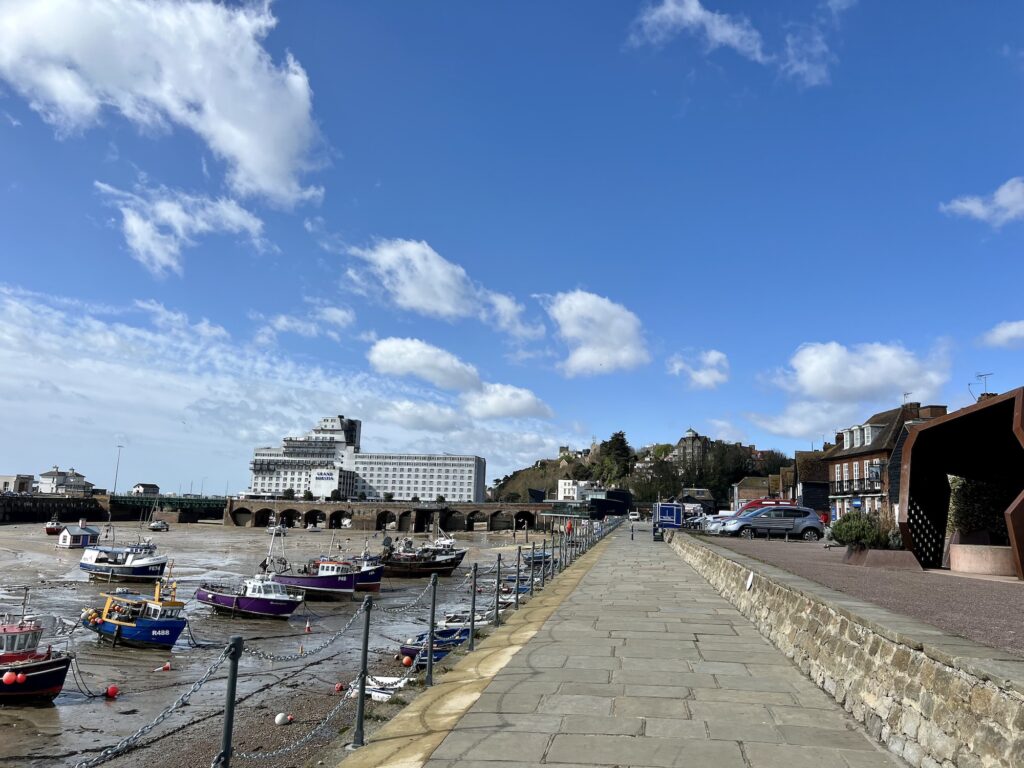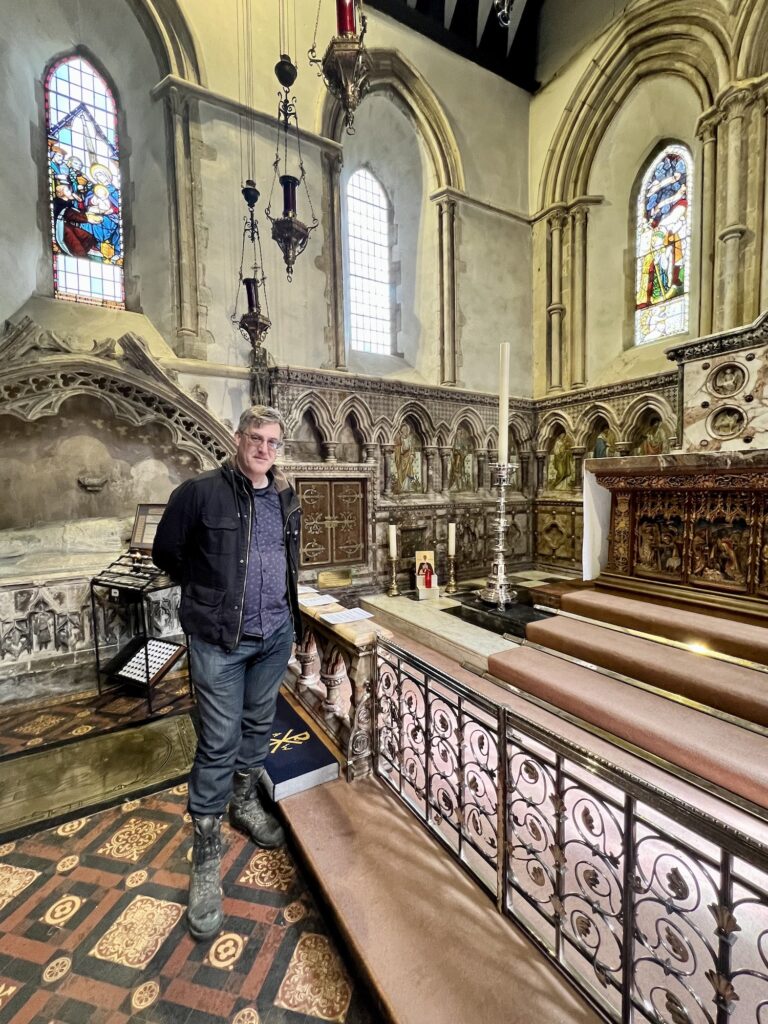The last stop on my journey around the country, exploring the places associated with Anglo-Saxon female saints at Folkestone, brings my project full circle. The project “Finding Eanswythe” was the starting point for my project, extending the network and connections to the whole of Britain. From Dunfermline in Scotland to Camelford in Cornwall and now Folkestone in Kent – the places, buildings, and communities I encountered on my travels could not have been more diverse. But all of the places had a very special character, atmosphere, and a friendly community to care for them.
At Folkestone, I met with Dr Andrew Richardson, a leading figure in the Eanswythe project and in this project: “Venerated Women” (Andrew has to be fully acknowledged for coming up with this title). The office at Sandgate, where I met him and his team, Annie and Paul, is a beautiful workspace close to Sandgate Beach. The discussion about the map and the project with the team was a great inspiration to add new features to the map. I very much enjoyed my time in the office and the exchange of ideas. Hopefully, there will be other opportunities to come back soon.
The next day, Andrew and I explored the landscape of Folkestone and the setting of Eanswythe’s first church in a location called: “the Bayle”. We walk along the shingle beach to the harbour and further to the top of the cliff. The similarities with the position of Whitby Abbey or St Andrew’s church at Bishopstone, on the cliff at the estuary across from the settlement, overlooking the sea and the surrounding landscape, are striking. You can find out more about the Eanswythe project here.



The event: “Three days in January” took place at the church in Folkestone on Saturday evening (see flyer here). Experts from the project – conservators, osteologists, archaeologists – meeting the church community and discussing the outcome and perception of the scientific investigation of the local saint’s relics makes for a fascinating meeting of usually opposing positions. But marrying up these two sides of the same coin is the key aim of ECLAS (Equipping Christian Leadership in an Age of Science). More information can be found here. St Wite’s shrine at Whitchurch Canonicorum contains the saint’s relics (only two in the country and you can read my blog here). It takes much courage for the community and the church to agree to a scientific investigation as the outcome is uncertain. What would have happened if the results coming back had been different? This raises the interesting question of how people connect to the remains of the saint. While some in the congregation see the relics as a medium to connect to God, scientists and historians were able to establish the history and support literary sources with scientific evidence, and for others, the skeletal remains of a young woman – an actual human being – who lived a life caring for others, showing courage and charity, conveys the values and ethical principles this person embodied and is remembered over the centuries, as an example of humanity that is exemplary and carries on in today’s society, beyond the Christian community. Minster Abbey, which holds relics of St Mildred, gives a good description of the meaning of relics as “merely a veneration of honour and affection such as can be given to a creature” on their website (find the link here and the link to the blog on Minster Abbey here).

I travelled almost 2,500 miles across the country to create the interactive map, including the photographs where I hope to have captured the atmosphere, the extraordinary fabric, and the beautiful landscapes of the Anglo-Saxon female saints in Britain, who are venerated to this day. I want to thank everyone who kindly agreed to meet me and share their knowledge and fascinating histories with me. This project was funded by the AHRC/UKRI through WRoCAH, and I am grateful for the opportunity given through this funding. Last but not least, I am very grateful for the fantastic support of the project team – Dr Andrew Richardson, Prof Barbara Yorke, and Dr Ellie Williams – for the exchange of ideas, for supporting the various strands of this project, and for inspiration across the three months. The website will continue to be available, and the hope is to continue the project, adding more places, saints and interesting stories as a resource for immersive story-telling about a fascinating aspect of Britain’s history and its influence on the present and the future.




